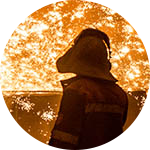How to Choose the Right Pig Iron for Casting Manufacturing?
2025-08-15 16:53:01 hits:0
In casting manufacturing, the selection of pig iron is of utmost importance. The quality and characteristics of pig iron directly affect the performance, cost, and production efficiency of castings. Therefore, it is crucial for casting manufacturers to understand how to choose the appropriate pig iron. This article will delve deeply into the strategies for pig iron selection in casting manufacturing and combine relevant high - quality keywords to help readers better understand this process.
Basic Characteristics of Pig Iron
Pig iron is obtained by smelting iron ore in a blast furnace. Its main components are iron, carbon, and silicon. Depending on its carbon content and other alloying elements, pig iron can be classified into gray iron, white iron, and ductile iron, etc. Each type of pig iron has its unique characteristics and applications.
Key Factors in Pig Iron Selection
When selecting pig iron, multiple factors need to be considered to ensure the quality and performance of castings.
Strategies for Pig Iron Selection in Casting Manufacturing
Innovation and Development in Casting Manufacturing
With the progress of technology, the selection of pig iron in casting manufacturing is also constantly innovating. For example, in recent years, through computer simulation technology, the behavior of pig iron during the casting process can be predicted more accurately, thereby optimizing the selection and use of pig iron. In addition, the development of new alloy pig irons also provides more options for casting manufacturing.
Conclusion
In casting manufacturing, the strategy for pig iron selection directly affects the product quality and production cost. By comprehensively considering chemical composition, mechanical properties, cost - benefit, and environmental requirements, manufacturers can select the most suitable type of pig iron to meet the needs of different applications. With the progress of technology and the changes in the market, the strategy for pig iron selection in casting manufacturing is also constantly evolving, and it will continue to provide innovative and optimized solutions for the industry in the future.
It is hoped that this article can provide valuable references for casting manufacturers in pig iron selection. If you are interested in other aspects of casting manufacturing, please continue to follow our relevant content.
Blog Author Profile
DAWN | Pig Iron & Castings Procurement Advisor 18 years in the foundry trenches give me an edge: I know how pig iron’s chemistry impacts casting quality and can troubleshoot defects like cracks and porosity. With a 1M MT/year pig iron and 60k MT/year casting output from our in-house factory, plus 200+ verified suppliers on our platform, we offer fast price comparisons. Expect a 24-hour inquiry response—my goal? Not just closing deals, but being your go-to partner in the foundry world.
18 years in the foundry trenches give me an edge: I know how pig iron’s chemistry impacts casting quality and can troubleshoot defects like cracks and porosity. With a 1M MT/year pig iron and 60k MT/year casting output from our in-house factory, plus 200+ verified suppliers on our platform, we offer fast price comparisons. Expect a 24-hour inquiry response—my goal? Not just closing deals, but being your go-to partner in the foundry world.

 en
en  fra
fra  de
de  ru
ru  ara
ara  gle
gle  it
it  jp
jp  kor
kor  th
th  zh
zh 



